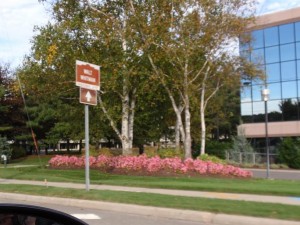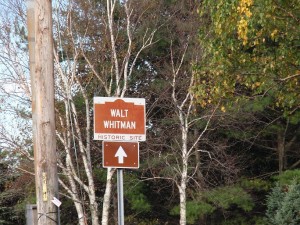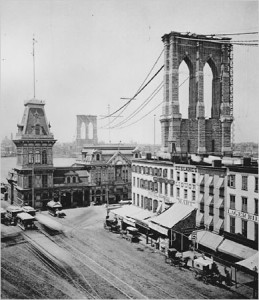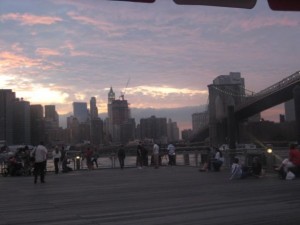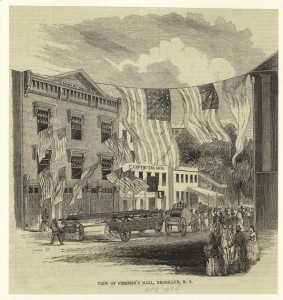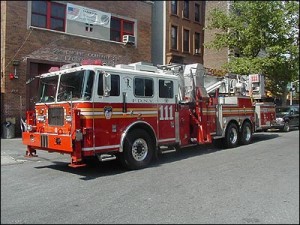jennifer for october 27
Last week, Prof. Gold and Jesse Merandy took us on a walking tour to explore the places that Whitman had been in Brooklyn.
One stop that I personally enjoyed most was theô the Brooklyn Promenade stop. The view looking out from the Brooklyn Promenade out to Manhattan was magnificent. Usually when I am on the BQE from Brooklyn traveling to the city, there is a part where I can see the Brooklyn Promenade above me, and I always see people with cameras snapping pictures, and last week I got to share the same views that the photographers were seeing all this time. The view is absolutely gorgeous, you can see the Manhattan skyline, the Brooklyn Bridge to the right, to the far left you can see the statue of liberty and below you can see an ongoing construction site. In the water, you can actually see the ferries too. ô At the Brooklyn Promenade, we were able to see Manhattan, a city that Whitman had much interest for and wrote about in his poem ãManahatta.ã
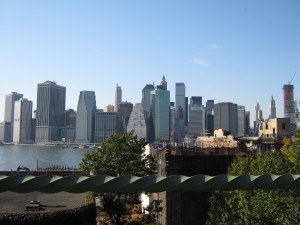 The pictures I took only shows minimal scenery of what the Brooklyn Promenade has to offer, but we can still see the Manhattan skyline and clear skies.
The pictures I took only shows minimal scenery of what the Brooklyn Promenade has to offer, but we can still see the Manhattan skyline and clear skies.
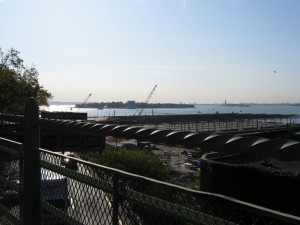
Manahatta
by Walt Whitman
(1819-1892)
I was asking for something specific and perfect for my city,
Whereupon lo! upsprang the aboriginal name.
Now I see what there is in a name, a word, liquid, sane, unruly,
musical, self-sufficient,
I see that the word of my city is that word from of old,
Because I see that word nested in nests of water-bays, superb,
Rich, hemm’d thick all around with sailships and steamships, an
island sixteen miles long, solid-founded,
Numberless crowded streets, high growths of iron, slender, strong,
light, splendidly uprising toward clear skies,
Tides swift and ample, well-loved by me, toward sundown,
The flowing sea-currents, the little islands, larger adjoining
islands, the heights, the villas,
The countless masts, the white shore-steamers, the lighters, the
ferry-boats, the black sea-steamers well-model’d,
The down-town streets, the jobbers’ houses of business, the houses
of business of the ship-merchants and money-brokers, the
river-streets,
Immigrants arriving, fifteen or twenty thousand in a week,
The carts hauling goods, the manly race of drivers of horses, the
brown-faced sailors,
The summer air, the bright sun shining, and the sailing clouds aloft,
The winter snows, the sleigh-bells, the broken ice in the river,
passing along up or down with the flood-tide or ebb-tide,
The mechanics of the city, the masters, well-form’d,
beautiful-faced, looking you straight in the eyes,
Trottoirs throng’d, vehicles, Broadway, the women, the shops and shows,
A million people–manners free and superb–open voices–hospitality–
the most courageous and friendly young men,
City of hurried and sparkling waters! city of spires and masts!
City nested in bays! my city!
The poem ãManhattaã is Whitmanãs admiration for Manhattan and it shows his interest for the city.
